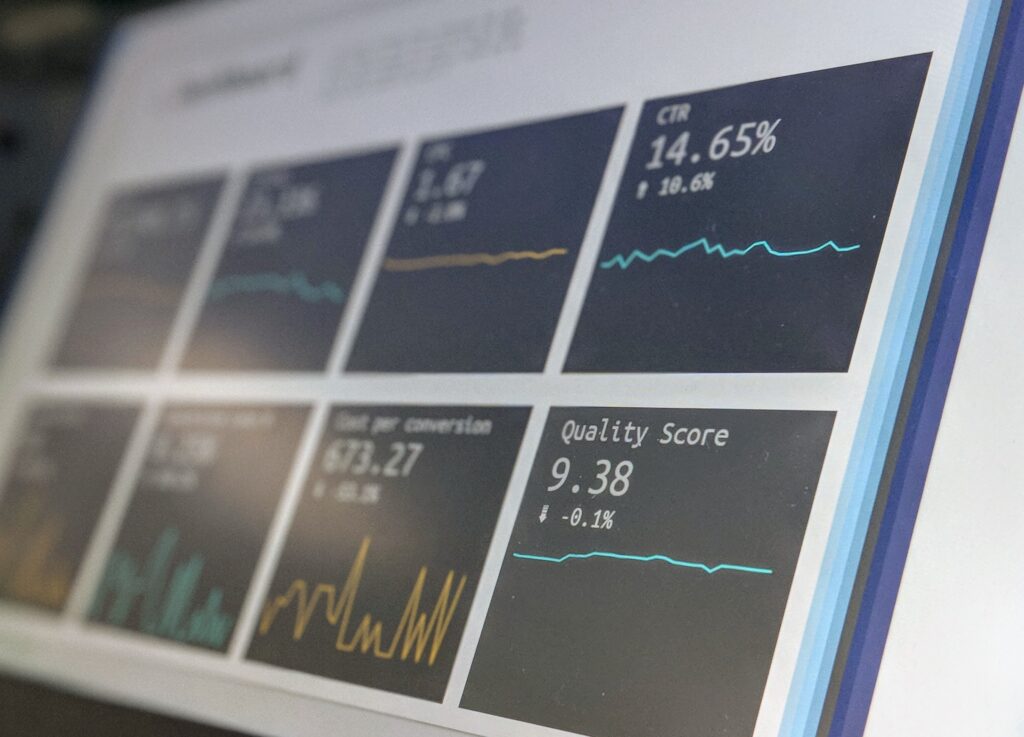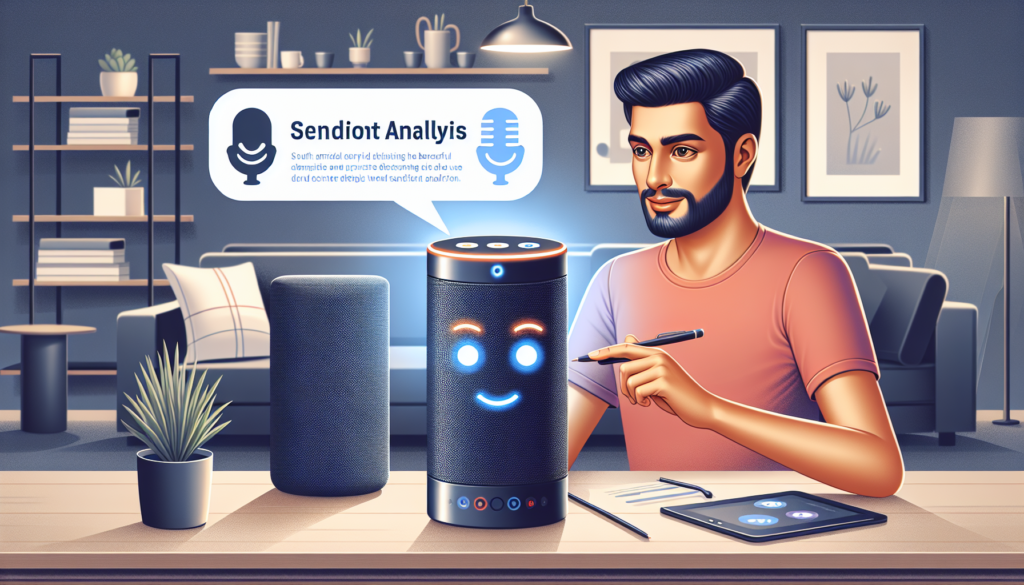Have you ever wondered how virtual assistants are able to understand and respond to human emotions? Sentiment analysis is the key. In this article, we will explore the impact of sentiment analysis on virtual assistant interactions. We will uncover how this technology enables virtual assistants to detect and interpret human emotions, allowing for more personalized and effective interactions. Join us as we delve into the world of sentiment analysis and discover its significance in shaping the future of virtual assistant technology.
The Impact of Sentiment Analysis on Virtual Assistant Interactions
Introduction
In today’s digital age, virtual assistants have become an integral part of our lives. From Siri to Alexa, these AI-powered assistants can perform various tasks, answer questions, and provide recommendations. However, the effectiveness of virtual assistants depends on their ability to understand and respond to user needs accurately. This is where sentiment analysis comes into play. Sentiment analysis, also known as opinion mining, is a technology that enables virtual assistants to analyze and understand the emotions and opinions behind user inputs. In this article, we will explore the impact of sentiment analysis on virtual assistant interactions and how it enhances user experiences.
Understanding Sentiment Analysis
Sentiment analysis is a branch of natural language processing (NLP) that focuses on identifying, extracting, and categorizing the sentiments expressed in text or speech. By analyzing the tone, context, and sentiment of user interactions, virtual assistants can gauge whether the user is happy, satisfied, frustrated, or angry. This analysis provides valuable insights into the user’s emotional state, allowing virtual assistants to tailor their responses accordingly.

How Virtual Assistants Work
Before delving into the role of sentiment analysis in virtual assistant interactions, it is crucial to understand how these assistants function. Virtual assistants rely on advanced algorithms and machine learning models to process and interpret user inputs. These models are trained on vast amounts of data and learn to recognize patterns, understand language nuances, and generate appropriate responses. Virtual assistants can operate on various devices, including smartphones, smart speakers, and computers, making them easily accessible and widely used.
The Role of Sentiment Analysis in Virtual Assistant Interactions
Sentiment analysis plays a crucial role in virtual assistant interactions by allowing these AI-powered assistants to comprehend human emotions and provide personalized responses. By accurately analyzing sentiment, virtual assistants can detect the user’s level of satisfaction or frustration. This information enables them to tailor their responses and take appropriate actions to enhance the user experience.

Benefits of Sentiment Analysis in Virtual Assistant Interactions
The integration of sentiment analysis in virtual assistant interactions brings forth several benefits that greatly improve user experiences. Let’s explore some of these advantages:
1. Improving User Experience
Virtual assistants equipped with sentiment analysis capabilities can adapt their responses to match the user’s emotions. For example, if a user expresses frustration or dissatisfaction, the virtual assistant can respond with empathy and offer solutions to address their concerns. This personalized approach creates a more positive user experience and fosters a sense of trust and reliability in the virtual assistant.
2. Enhancing Natural Language Processing
Sentiment analysis enhances the natural language processing capabilities of virtual assistants. By understanding the sentiment behind user inputs, virtual assistants can interpret the meaning more accurately. This allows them to generate more contextually appropriate responses, leading to more meaningful and fruitful interactions.
3. Personalization and Customization
Sentiment analysis enables virtual assistants to personalize their responses based on the user’s emotions. By recognizing positive sentiments, virtual assistants can provide tailored recommendations and engage in friendly conversations. Likewise, if a user expresses negative emotions, the virtual assistant can empathize and offer solutions to rectify any issues. This personalization creates a stronger bond between the user and the virtual assistant.
4. Efficient Task Completion
By analyzing sentiments, virtual assistants can prioritize and address user requests more effectively. For example, if a user expresses urgency or frustration regarding a particular task, the virtual assistant can expedite its completion. This proactive behavior improves task efficiency and ensures that user needs are met promptly.
5. Recognizing and Responding to Emotional Needs
Sentiment analysis equips virtual assistants with the ability to recognize and respond to user emotional needs. Whether it be offering words of encouragement, suggesting activities to uplift mood, or providing support during difficult times, virtual assistants can act as empathetic companions. This emotional support can be invaluable, especially for individuals facing isolation or mental health challenges.
Challenges of Implementing Sentiment Analysis
While sentiment analysis offers numerous advantages, there are some challenges associated with its implementation in virtual assistant interactions.
1. Accuracy of Sentiment Analysis
One of the primary challenges in sentiment analysis is achieving high accuracy in understanding and categorizing complex emotions accurately. Human emotions can be nuanced and subjective, making it difficult for virtual assistants to interpret them correctly. Striving for improved accuracy remains a continuous endeavor in sentiment analysis research.
2. Privacy and Data Security Concerns
Sentiment analysis involves analyzing user data to understand their emotions. However, with this approach comes privacy and data security concerns. Users may worry about their data being shared, stored, or used for unintended purposes. Ensuring robust data protection measures and obtaining user consent are essential to address these concerns.
3. Technical Limitations
Implementing sentiment analysis in virtual assistants may face technical limitations. These limitations can include computational power, memory constraints, and the ability to handle real-time analysis. Overcoming these technical challenges requires continuous advancements in hardware and software technologies.

Overcoming Challenges
While challenges exist, there are strategies to overcome them and optimize the implementation of sentiment analysis in virtual assistant interactions.
1. Training and Fine-tuning Algorithms
To improve the accuracy of sentiment analysis, continuous training and fine-tuning of algorithms are essential. Training algorithms on diverse and representative datasets helps in detecting and categorizing a wider range of emotions accurately. Additionally, leveraging user feedback and incorporating human experts in the algorithms’ development process can significantly enhance sentiment analysis capabilities.
2. Data Anonymization and Encryption
Addressing privacy and data security concerns can be achieved through robust data anonymization and encryption techniques. By anonymizing user data and encrypting sensitive information, virtual assistants can ensure user privacy while still benefiting from sentiment analysis. Transparency in data handling practices and clear privacy policies further enhance user trust.
3. Ethical Considerations
Implementing sentiment analysis in virtual assistant interactions requires ethical considerations. Virtual assistants should respect user boundaries and consent, ensuring that emotional data is used responsibly and in a beneficial manner. Ethical guidelines and regulations can guide the development and deployment of sentiment analysis technology in a responsible and inclusive manner.
The Future of Sentiment Analysis in Virtual Assistant Interactions
Looking ahead, sentiment analysis is expected to play an even more significant role in virtual assistant interactions. Several trends and advancements can be anticipated in this field.
1. Increased Integration and Seamless User Experience
Sentiment analysis will play a crucial role in integrating virtual assistants seamlessly into our daily lives. Virtual assistants will be able to understand and respond to user emotions across multiple platforms and devices, creating a consistent and frictionless user experience.
2. Advancements in Natural Language Processing
As natural language processing continues to evolve, sentiment analysis will benefit from improved language understanding capabilities. Virtual assistants will become more adept at interpreting complex emotions, sarcasm, and context-specific sentiments, leading to more accurate and engaging interactions.
3. Emotion Recognition and Adaptive Responses
Future virtual assistants will go beyond sentiment analysis and incorporate emotion recognition technologies. These assistants will be able to detect subtle facial expressions, voice inflections, and other cues to accurately gauge a user’s emotional state. With this information, virtual assistants can provide adaptive responses, such as adjusting their tone or offering appropriate emotional support.

Conclusion
Sentiment analysis has significantly transformed virtual assistant interactions, enhancing user experiences and personalizing interactions. By understanding user emotions, virtual assistants can respond appropriately, improve natural language processing, and address user needs more effectively. While challenges exist, continuous advancements in sentiment analysis techniques, privacy measures, and ethical considerations will shape the future of virtual assistant interactions. As the integration of sentiment analysis and virtual assistants progresses, we can expect even more seamless, personalized, and emotionally intelligent interactions with these AI-powered companions.
